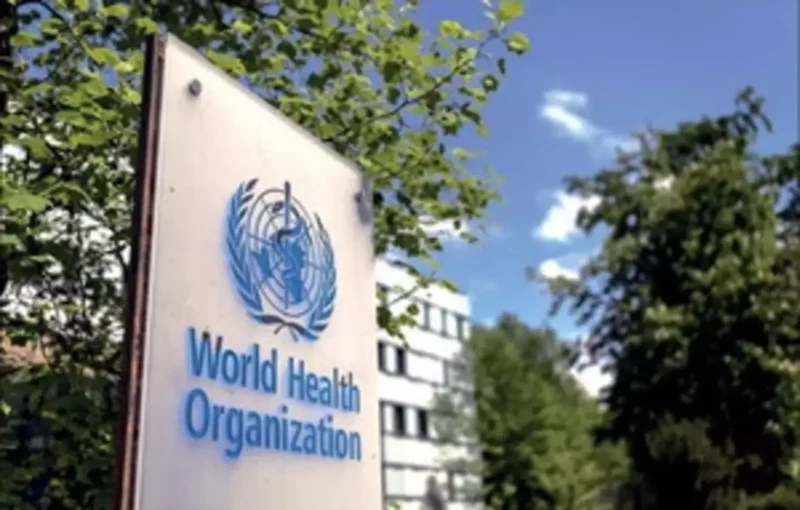New Delhi, 27 November 2024: World AIDS Day 2024 marks another pivotal moment in the global fight against HIV/AIDS. At the heart of this year’s commemoration was the launch of the UNAIDS World AIDS Day Report 2024, where the World Health Organization (WHO) Director-General delivered opening remarks that resonated deeply with the global health community. The address highlighted the strides made in combating HIV/AIDS, the challenges that persist, and the collective responsibility required to end this global epidemic.
A Call for Global Solidarity
The WHO Director-General began by emphasizing the theme for World AIDS Day 2024: “Uniting for Universal Access.” This year’s theme underscores the critical need for global solidarity in ensuring universal access to life-saving HIV prevention, testing, and treatment services. In his remarks, the Director-General commended the international community for its unwavering commitment to addressing HIV/AIDS but cautioned against complacency.
“We have made remarkable progress over the past decades, but the fight against HIV/AIDS is far from over,” he stated. “Today, we stand at a crossroads. While we celebrate milestones achieved, we must also confront the gaps and inequalities that continue to fuel the epidemic.”
Progress in the Fight Against HIV/AIDS
One of the key highlights of the UNAIDS World AIDS Day Report 2024 is the significant reduction in new HIV infections and AIDS-related deaths globally. The report notes that:
New HIV infections have decreased by 40% since 2010, with significant declines in sub-Saharan Africa, one of the hardest-hit regions.
Access to antiretroviral therapy (ART) has expanded, with over 28 million people now receiving life-saving treatment worldwide.
Mother-to-child transmission of HIV has been dramatically reduced, thanks to improved access to prevention and treatment services for pregnant women.
The Director-General praised these achievements as evidence of what can be accomplished through coordinated global efforts, robust public health initiatives, and sustained funding. However, he cautioned that success is uneven and that marginalized communities, including women, children, and LGBTQ+ individuals, continue to face disproportionate risks.
Persistent Challenges in Addressing HIV/AIDS
Despite progress, the WHO Director-General’s remarks highlighted several challenges that remain obstacles to ending the HIV/AIDS epidemic:
Inequities in Access: The Director-General noted that millions of people, particularly in low- and middle-income countries, still lack access to HIV testing, prevention, and treatment services. This disparity underscores the urgent need for universal health coverage.
“Health is a human right, yet too many people are being left behind,” he said. “We must prioritize equity in our response to HIV/AIDS.”
Stigma and Discrimination: Stigma and discrimination remain major barriers to accessing care for people living with HIV. The Director-General called on governments, communities, and civil society organizations to redouble efforts to combat stigma, promote inclusion, and protect the rights of all individuals affected by HIV/AIDS.
Insufficient Funding: While significant resources have been mobilized to fight HIV/AIDS, funding gaps persist. The Director-General urged donor countries and private-sector partners to sustain and increase their investments in HIV programs, particularly in regions with the highest burden.
Emerging Health Crises: The COVID-19 pandemic and other global health emergencies have disrupted HIV services in many countries, leading to setbacks in prevention and treatment efforts. The Director-General stressed the importance of building resilient health systems that can withstand future crises while maintaining essential services for people living with HIV.
The Role of Innovation in Combating HIV/AIDS
The Director-General’s address also highlighted the critical role of innovation in the global HIV response. Advances in diagnostics, treatment, and prevention have been instrumental in reducing the burden of HIV/AIDS. He specifically mentioned:
Long-acting injectable therapies that have improved adherence and convenience for people living with HIV.
Pre-exposure prophylaxis (PrEP) and other preventive measures that have significantly reduced the risk of HIV transmission.
Promising developments in HIV vaccine research, which offer hope for a future without HIV.
“These innovations are not just scientific breakthroughs; they are lifelines for millions of people,” the Director-General said. “Our challenge is to ensure that these tools reach everyone who needs them, regardless of where they live or who they are.”
A Focus on Prevention
The UNAIDS report emphasizes that prevention remains the cornerstone of the HIV response. The Director-General echoed this sentiment, urging countries to prioritize investments in comprehensive prevention programs. These include:
Expanding access to condoms and lubricants.
Scaling up harm reduction services for people who inject drugs.
Promoting sexual and reproductive health education, particularly for young people.
Strengthening community-based interventions that empower individuals to take control of their health.
Youth and HIV/AIDS: A Critical Priority
Young people were a central focus of the Director-General’s remarks. The UNAIDS report highlights that adolescents and young adults account for a significant proportion of new HIV infections. The Director-General called for targeted interventions to address the unique vulnerabilities of this demographic, including access to age-appropriate education, peer support networks, and youth-friendly health services.
“The future of the HIV response depends on our ability to engage and support young people,” he said. “They are not just beneficiaries of our efforts; they are leaders and changemakers in their own right.”
Looking Ahead: The Path to Ending HIV/AIDS
The Director-General concluded his remarks with a call to action, urging all stakeholders to recommit to the global goal of ending HIV/AIDS as a public health threat by 2030. He outlined three key priorities for achieving this vision:
Strengthening Partnerships: Collaboration between governments, international organizations, civil society, and the private sector is essential for sustaining momentum and scaling up successful interventions.
Investing in Health Systems: Robust health systems are the foundation of effective HIV responses. The Director-General called for increased investments in infrastructure, workforce training, and technology to ensure that health systems can deliver high-quality care.
Fostering Accountability: Regular monitoring and evaluation of progress are critical for identifying gaps, improving strategies, and holding stakeholders accountable for their commitments.
“The road ahead is challenging, but it is also full of promise,” he said. “Together, we can end the AIDS epidemic and ensure that no one is left behind.”
The WHO Director-General’s opening remarks at the launch of the UNAIDS World AIDS Day Report 2024 serve as both a celebration of progress and a rallying cry for action. While significant strides have been made, the fight against HIV/AIDS is far from over. The challenges of inequity, stigma, and funding must be addressed with urgency and determination.
As the global health community reflects on the achievements and lessons of the past year, one message is clear: the fight against HIV/AIDS requires unwavering commitment, innovation, and solidarity. Only by working together can we build a future where HIV/AIDS is no longer a threat to health and well-being.











